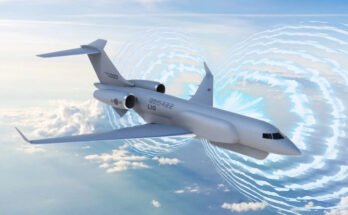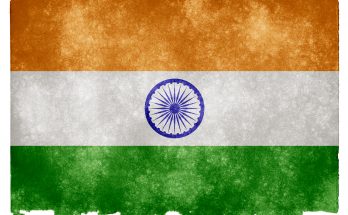
There has been an uptick in speculation in recent weeks that Moscow and Islamabad are in dialogue over an arms deal that would see Pakistan procure significant amounts of Russian hardware, including surface-to-air missile systems and tanks. Without either side saying much about the matter publicly, it is difficult to determine the pace of negotiations or the prospect of a deal being signed. Given the mounting speculation, however, it is worthwhile to review the hurdles that an agreement would face, which might inform whether the rumors will actually manifest in a deal.
In June 2014, Russia lifted its arms embargo on Pakistan. The embargo had mostly precluded the arms trade between the two (with some exceptions). Rostec CEO Sergei Chemezov, in announcing the move, noted at the time, “Such a decision has been taken. We are holding talks on supplying the helicopters.” The two sides signed a defense cooperation pact in November 2014 and, subsequently, a military-technical cooperation agreement. The Russian and Pakistani militaries held their first joint exercise in September 2016 and, under an August 2018 agreement, Russia may provide military training for Pakistani personnel.
Regarding arms trade, Pakistan purchased four Mi-35M attack helicopters, which arrived in the country last year and were commissioned into service with the Army in December. In its February 2019 edition, AirForces Monthly reported that a follow-on deal for five had been signed. Pakistan may ultimately be interested in close to two-dozen of the helicopters.
There may be further sales down the road. In a recent analysis, the Russian think tank Center for Analysis of Strategies and Technologies (CAST) indicated that, given Pakistani military requirements and assuming Islamabad turned to Moscow to fill them, the two could sign a $9 billion deal. This would dramatically dwarf the Mi-35M deal. Indian media, citing sources in the Indian Ministry of Defence, reported that a range of Russian equipment could be sold, such as Pantsir surface-to-air missiles and T-90 main battle tanks.
Before getting carried away with the recent reports, however, these details require qualifiers. It is certainly likely that Russia and Pakistan have held dialogue on a range of military equipment. In September 2016, Pakistani Maj. Gen. Naveed Ahmed, who heads the Directorate General of Defence Purchase, told media at Russia’s ARMY-2016 exhibition that his country’s military has shown “keen interest” in Russian systems. He added, “We are looking for the air platform, for any sorts of helicopters; for the Army we are looking for tanks, we are looking for anti-tanks weapon system[s] and, more importantly, we are looking for the air defense system.” The Pakistani military spokesman, Maj. Gen. Asif Ghafoor, told Russian media in March of this year that dialogue continued, naming air defense systems, aircraft, and anti-tank missiles as a focus for the discussions.
Pakistan is known to be evaluating tanks in particular, and anti-tank systems would help counter new tanks entering service with India. Air defense systems remain a key priority, particularly after the February 2019 standoff with India, which featured both sides delivering air strikes to the other’s territory, the first instance of this dimension of warfare between the two since 1971. But whether Pakistan turns to Russia for these requirements hinges on a number of factors.
Pakistani Preference for Chinese Equipment
The first factor that could well inhibit a large deal would be supplier inertia. Pakistan has primarily procured military equipment from China in recent years.
During the 1980s and again in the 2000s, political and strategic interests prompted Washington and Islamabad to reach a number of arms deals. But, as immediate incentives have eroded – the Soviet invasion of Afghanistan in the first case and the U.S. military action in Afghanistan in the second – the relationship between the two often deteriorates. Pakistan’s procurement of F-16s serves as an example: the country sought, and acquired, F-16s in the 1980s; had a buy of F-16s in the 1990s frozen; procured more in the mid-2000s; and then saw the U.S. Congress place an effective block on a subsequent buy in 2016.
Ties with China have not been subject to such dramatic fluctuations and, particularly as China’s defense industry capabilities have advanced, Pakistan has been able to benefit. Crucially, China has worked with Pakistan on joint production of arms equipment, helping to develop the Pakistani defense industry. A number of projects are ongoing, and it is likely that, for additional requirements, Pakistan will strongly consider Chinese systems (such as with tanks, where the VT-4 is said to be the Pakistani favorite in a competition involving the Russian T-90 and Ukrainian T-84).
CAST has noted that, given China’s present dominance in the Pakistani military market, Islamabad may well have an incentive to broaden its supplier base so as to reduce dependency on China. Noticeably, the Pakistani military does hold equipment from a range of suppliers – from China to the U.S. to European countries – and Pakistan does sometimes procure equipment “off the shelf” without acquiring technology transfer or establishing a local joint venture for production (the Mi-35M being an example). This is not to say that Pakistan is unhappy with its partnership with China (quite the contrary), but developing relationships with multiple suppliers is one way to provide flexibility and bolster one’s negotiating power with the primary supplier.
But whether Pakistan will turn to Russia to diversify is another question. The U.S. is largely out of the picture; despite Washington aiming to get Pakistani support for U.S. priorities in Afghanistan, the two have frequently engaged in spats. European suppliers remain an option, however, and Pakistan is slated to acquire attack helicopters and warships from Turkey under deals announced last year.
India’s Perspective
Moscow is not exactly averse to selling to rival countries, which can be illustrated in the fact that it is the largest arms supplier to Armenia and one of the top suppliers to Azerbaijan, both of which have engaged in numerous conflicts and skirmishes against one another. But doing so risks provoking the ire of the supplier countries. India is one of the biggest customers of Russian military equipment, giving the country quite a bit of leverage over a potential deal between Russia and Pakistan. This is more so the case given that India has the ability to procure from a number of countries and is not limited to solely Russia.
Russia has sold billions of dollars’ worth of equipment to India, including tanks; armored vehicles; anti-tank, -ship, and -air missiles; frigates; fighter jets; radar; and submarines, among other systems. The two continue to ink further deals. India is set to import the S-400 and T-90 tanks. As Russian sales to China face a decline, given China’s increasing ability to provide for itself, India becomes a more important market for Russia. Indian opposition, then, may well preclude the signing of any large deal.
India can be expected to lobby Russia not to sell equipment that could be a threat to the Indian military. That some of the recent news on Russia-Pakistan deals apparently comes from Indian Ministry of Defence sources might be indicative of this being ongoing. Moscow thus must weigh the financial value (and political proceeds) of a deal with Pakistan against the likelihood of angering New Delhi. Selling Mi-35Ms might not prove problematic – especially as they can be used for counterinsurgency purposes – but other systems, like air defense equipment, would be much more controversial.
Financing the Deal
Another challenge to a large deal between Russia and Pakistan is the financial cost. Pakistan may have $9 billion in potential requirements for its military, but the country is not in a position to make a purchase that large, especially not all at once. Prime Minister Imran Khan has been able to stave off the immediate economic crisis that faced him upon taking office last year by turning to Gulf partners for support as well as the International Monetary Fund (IMF). Even so, the economy faces a number of challenges that limit the ability of the country to spend on massive arms deals, imposing a de facto limit even if civilian oversight of the defense budget is lacking. Individual deals with Russia, such as the Mi-35M buy, are certainly possible, but a massive buy is less likely.
For the 2018/2019 budget year, Pakistan allocated about PKR1,100 billion for defense spending, which, at the time of the proposal, was worth about $9.6 billion. (Subsequent exchange rate volatility has seen that value plunge to about $7.8 billion in May 2019.) With a sizable number of troops in service, some of this will go toward personnel upkeep. With Russia pushing for arms deals in national currencies (in other words, not in dollars), a Pakistan-Russia deal might be signed in rubles – which would enable Pakistan to avoid drawing on dwindling dollars – but even here, the rupee has fallen against the ruble as well, making imports more expensive. Russia has certainly extended loans for other countries to utilize in procuring equipment, such as those provided to Armenia, but the size of the loans it would be capable of offering has a ceiling, and, in utilizing them, Pakistan would add to its external debt.
The challenging economic outlook should not be seen as a total barrier for Pakistani procurement, but certainly remains an obstacle. Outright gloom should not be overstated, as Pakistan continues to advance projects with China and has bought Turkish equipment worth $3 billion over the last few years. Russian equipment, moreover, comes at a financial cost cheaper than Western alternatives.
Washington: Potential Spoiler?
Along with the other challenges to a Russia-Pakistan arms deal is the specter of Washington’s sanctions, principally under the Countering America’s Adversaries Through Sanctions Act of 2017 (CAATSA). A number of Russian firms are included on CAATSA’s Section 231(d) list, including Almaz-Antey, whose subsidiary Ulyanovsk Mechanical Plant produces the Pantsir.
In theory, any customer contracting with these entities will face American sanctions. In practice, the U.S. has not pursued a blanket ban on cooperation with Russia under CAATSA, offering waivers to allies and partners, with only a vague requirement of that country committing to eventually reducing its dependency on Russia, while sanctioning rivals, like China. Where Pakistan would turn up on this is uncertain. The U.S. has downsized its own arms sales to Pakistan and may well be barring export licenses for other deals, such as Pakistan’s procurement of T-129 attack helicopters from Turkey, which utilize American-made components (thus giving Washington a veto on their re-export).
U.S. policy toward Pakistan under U.S. President Donald Trump has fluctuated. In early January 2018, he said Pakistan had given the U.S. “nothing but “lies & deceit” in a post on his Twitter account. Earlier this year, President Trump changed tunes, saying that the two had a “much better” relationship. The U.S. is seeking Pakistan’s support for a peace initiative with the Taliban in Afghanistan, while Pakistan has been forced to turn to the IMF in order to ease its debt burden.
Ties remain tense, however, as illustrated by a spat back in March, meaning that there is a looming possibility that an arms deal with Moscow could prompt sanctions from the U.S. administration. For Pakistan, this would be an unhappy prospect.
Making a Deal
Moscow and Islamabad have moved toward deepening their political relations in recent years, but nevertheless the above factors, especially in concert, make for substantial hurdles to a large arms deal. They may well find ways to move forward anyhow. Especially with the U.S. squeezing Russian arms exports, Moscow is eager for new markets to sell to. Over the long term, Pakistan offers a potentially attractive hedge against Russia losing market share in India. From the Pakistani perspective, Russia is one alternative supplier that can be tapped to diversify from China, if need be. Negotiations between the two can thus be expected to yield arms deals at least for the time being, just not any of eye-popping value.
Military markets analyst, covering Eurasia, Middle East, and Africa.




